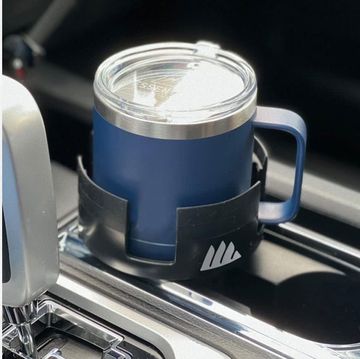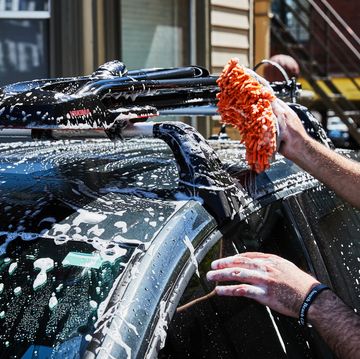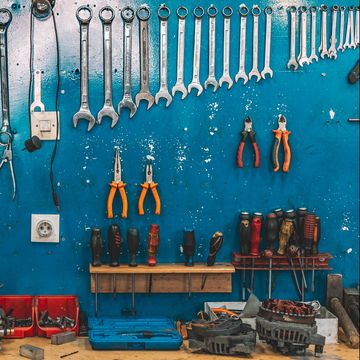A competent mechanic can relatively easily diagnose automotive maladies that are heard or felt--but smells are more difficult. Say you're cruising along and notice a strange whiff of ... something. It's an unnaturally sweet and puzzling odor. But after you round the next corner, it's gone. As the road straightens out again, it's back. It's like someone has set a towel soaked in maple syrup on fire. Within a few more miles, that whiff of sweetness has become cloyingly overwhelming. Soon, it's clear what the problem is: That stench is coolant, leaking underhood somewhere from the cooling system. Sure enough, before you manage to scoot home, the temperature gauge starts to creep upward and small curls of steam are peeking out of the grille. After letting things cool off for a half-hour, you gingerly open the hood, expecting to see something obvious, like a loose cap or a split hose.
Not a chance, pal. There's dragon-vomit-green coolant everywhere. Next step, hose everything down with fresh water and let it all dry off. A quick couple of quarts of water added to the radiator will let you start the car without baking the engine. But before you put the hose away, water starts to drip from the radiator. It's immediately apparent where the leak is--bilious green coolant is seeping from a crack in the plastic end tank. Your radiator is (sorry) cooked.
You Can't Patch Plastic
When aluminum-and-plastic radiators first hit the market a generation ago, people actually tried to repair them. There was the obvious fix of simply epoxying up the cracks--hey, it's just plastic. If I can patch a plastic gas tank, fender or even a windshield washer reservoir, I should be able to plug up a little crack less than an inch long, right?
Wrong. Trust me, I've tried this--usually late at night when I needed to get something back on the road and the parts were still days away from arriving. It's a waste of time. The plastic tank flexes too much with the heat and pressure, and any adhesive just gives up. Besides, the tank's glass-reinforced nylon structure has likely grown brittle over the years. Another crack will appear nearby fairly soon. Again, when plastic-tank radiators were first introduced, a lot of dealerships tried to fix them. One failure mode, in addition to our aforementioned cracked tank, was in the long O-ring seal between the aluminum radiator and the plastic end tanks. The repair involved uncrimping the steel finger clamp holding the two together, replacing the tank or O-ring and crimping it all together. (I even have a special pair of uncrimping-crimping pliers in my toolbox for the job.) This repair has become less common because radiators are now far less expensive than they once were.
Bottom line: If you have a bad plastic-tank radiator, you might as well just buy a new one. If you have a copper-and-brass radiator, it might be repairable at a radiator shop. Either way, save some money by doing the removal and installation yourself.
Let It Bleed
Start by draining the coolant. Now, do I need to tell you to let the car cool off first? Didn't think so. You're supposed to recycle this stuff, and most GM dealerships have a coolant-recycling machine. (GM is big on recycling and made all its dealers buy coolant-recycling machines a few years back.) Don't use the same drain pan you use for oil and transmission fluid--even a few drops of oil will contaminate used coolant, which then has to be disposed of as hazardous waste. Call your local department of public works or fire department for advice on disposal. Flushing it down the drain or using it to kill weeds isn't acceptable.
Don't leave any used coolant lying around. The glycol-based liquid has a syrupy-sweet taste, and children and pets need ingest only a few spoonfuls to kill them. Most coolant on the market today has been treated with an extremely bitter taste to prevent fatalities. Soak up any small spills with kitty litter, sawdust or sand, and dispose of the sweepings properly.
When the coolant has stopped dripping, swap drain pans. Most automatic transmission vehicles have a transmission-oil cooler in the radiator, and our photo truck also has an engine-oil cooler. Remove these lines, either by undoing the hose clamp on the fittings or unscrewing them. Cap these hoses to keep foreign matter out and expect a few ounces of ATF or oil to dribble from the lower port on the radiator into your catch pan. Stubborn radiator hoses may need to be cut off.
Easy Out
See if there are any fan-shroud pieces to remove, but you might only need to undo the fasteners and sneak the radiator straight up and out without actually removing the shroud. Don't bend the fan blades, and watch for rubber radiator-mounting cushions trying to escape by jumping under the car.
Unbox the new radiator and give the old and new radiators the hairy-eyeball side-by-side treatment to be sure you have the correct one. Carefully drop the new radiator in place. Don't bend any fins; you'll reduce the new radiator's ability to reject heat.
Button up the clamps, reinstall the hoses and cooler fittings--it's time to top everything off. If the hoses won't slip over the spigots, try lubing with a little bit of coolant. If that doesn't make them slip on relatively easily, it's time for new hoses.
Fifty-Fifty
Often, you can just top off the system, fire up the engine and go. But many vehicles have specific bleeding procedures, requiring that bleeder fittings be, well, "burped." In some instances, the front of the vehicle must be raised up to get all the air out of the system. That's because the pressure cap is below the highest point in the engine where coolant flows. Failure to get a pocket of air out of the cylinder head could cause overheating, so be sure to follow procedure. Top off the overflow tank to the COLD line, too.
Now it's time to start up the engine and look for leaks. Top off the transmission and engine if you spilled any when you disconnected the cooler lines.
There used to be one kind of coolant on the market. These days, there are more than a half-dozen, in a rainbow of colors. Your car's manufacturer has a specific recommendation, which should be followed. Sharp-eyed readers will note that we're refilling this GM vehicle with conventional green coolant, instead of the factory-recommended orange long-life Dex-Cool that GM installed at the factory. For whatever reason, a previous owner had changed over to green, and we elected to continue that practice. Dex-Cool can take a long time to provide corrosion protection when it hasn't been used in the system for a while; the anti-corrosion additives in conventional coolant work immediately.
| 2. Loosen the clamps on the coolant hoses and carefully pry the hoses off the spouts on the end tanks. Consider changing the hoses, which have a normal service life of five to seven years. | 3. The steel cooler lines are attached with thin steel or brass hex fittings. It's always best to use the right tool--in this case, a flare-nut wrench that will grip all six of the fitting's corners, not just two. |













